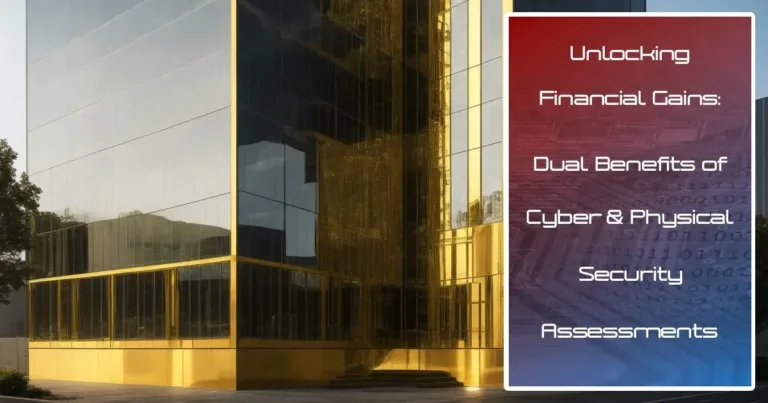Security Measures for Medical Offices: A Blueprint for Building Trust and Safety
In today’s healthcare landscape, a medical office is more than a healing space; it’s a sanctuary of trust, safeguarding sensitive patient data, valuable equipment, and life-saving medications. Recognizing the critical role of security in enhancing operational efficiency and fortifying patient trust, Grab The Axe presents a comprehensive guide to transforming your medical office into a bastion of safety and reliability.
Table of Contents
Security Measures for Medical Offices: Physical Security Measures
Cutting-edge Access Control:
In today’s medical facilities, traditional locks and keys no longer suffice. At Grab The Axe, we deploy biometric systems that use unique physical characteristics, such as fingerprints or iris patterns, for identification, ensuring unparalleled accuracy in access control. Our advanced ID card scanners provide a second layer of security, enabling quick and efficient verification of credentials. Moreover, our meticulous visitor logs are designed to record every entry and exit, providing an auditable trail of who is in the facility at any given time. This trifecta of security measures ensures that access is strictly managed and monitored, maintaining a secure environment for sensitive areas.
Unbreachable Equipment Protection:
Valuable medical equipment represents a significant investment and is vital for patient care. To safeguard these assets, Grab The Axe introduces robust security cages, crafted from high-strength materials, to shield equipment from theft or damage. Complementing these are our state-of-the-art alarm systems, which provide immediate alerts in the event of unauthorized access attempts, ensuring that your equipment remains secure and operationally ready at all times. This comprehensive protection strategy not only deters potential thieves but also ensures that your facility can serve patients without unexpected equipment downtime.
Impenetrable Medication Safes:
Controlled substances require the highest level of security due to their sensitive nature and potential for abuse. Our advanced secure cabinets and safes are specifically designed for the healthcare sector, featuring sophisticated locking mechanisms and access control technologies. With detailed access logs, administrators can track who accessed the medication, when, and for what purpose, offering an unmatched level of accountability and safety. This ensures that medications are stored securely and accessed only by authorized personnel, minimizing risks and enhancing patient safety.
Security Measures for Medical Offices: Digital Security
Ironclad Patient Data Protection:
Patient records are the backbone of medical care, containing sensitive information that must be protected at all costs. Our encrypted databases provide a secure repository for patient data, utilizing advanced encryption algorithms to ensure that information is unreadable to unauthorized users. Two-factor authentication adds an additional layer of security, requiring a second form of verification beyond just a password, significantly reducing the risk of unauthorized access. With Grab The Axe, you can be confident that patient records are secure, supporting both confidentiality and compliance with regulations like HIPAA.
Secure, HIPAA-Compliant Communication:
Effective communication is essential in healthcare, yet it must be executed with utmost privacy and security. Our HIPAA-compliant communication platforms are engineered to safeguard every interaction, ensuring that patient conversations, whether digital or voice, are encrypted and secure. This commitment to security facilitates seamless, confidential communication between healthcare providers and patients, fostering trust and ensuring compliance with stringent privacy laws.
Proactive Software Defense:
In the digital age, software vulnerabilities are a constant threat to the security of medical facilities. Our approach to software defense includes regular, automatic updates to ensure that security software is equipped with the latest protections against new threats. Additionally, our vigilant IT monitoring services proactively scan for and identify vulnerabilities, enabling rapid response to potential threats before they can be exploited. This proactive defense strategy keeps your digital infrastructure several steps ahead of cyber threats, ensuring the continuity and integrity of your operations.
Security Measures for Medical Offices: Emergency Readiness
Comprehensive Emergency Protocols:
At Grab The Axe, we understand that readiness is the key to safety. Our comprehensive emergency protocols cover everything from fire safety to medical emergencies, ensuring that your staff is not just prepared but fully equipped to respond effectively. Tailored to meet the specific needs of your facility, our protocols include regular fire safety drills, emergency medical response training, and crisis management exercises, all designed to enhance the ability of your staff to protect and serve under any circumstances. This proactive approach minimizes risks and ensures a swift, organized response to emergencies, safeguarding both patients and staff.
Visitor and Staff Safety Synergy:
Innovative Visitor Management:
Securing a medical facility extends beyond protecting physical assets and confidential data—it’s about creating a safe environment for everyone who steps through your doors. Our innovative visitor management system includes issuing visitor badges that detail the areas accessible to each visitor, coupled with monitored entry points to track ingress and egress. Strategically placed surveillance cameras complement this system, offering real-time monitoring and recording of all public areas. This integrated approach ensures that visitors are safely managed, and any potential security issues are quickly identified and addressed.
Empowered Staff Training:
Knowledge and preparation are the cornerstones of a secure facility. Our bespoke workshops cover a broad spectrum of critical topics, from the latest security protocols and data protection measures to comprehensive emergency response training. By empowering your team with the knowledge and tools they need to act decisively, we help maintain a secure and confidential environment. Regular training sessions ensure that all staff members are up-to-date on the best practices in security and emergency preparedness, fostering a culture of safety and vigilance.
Security Measures for Medical Offices: External Threats
Fortified Parking Lot Security:
The safety of your facility’s parking lot is just as crucial as the security within. Our sophisticated lighting and surveillance solutions are designed to illuminate and monitor your parking areas effectively, deterring unauthorized access and enhancing safety for patients and staff alike. Emergency call stations and visible security patrols further reinforce this safe haven, providing immediate assistance and response to any security concerns.
Vigilant Building Security:
Our security measures extend well beyond the confines of standard operating hours. With dedicated security personnel stationed at critical access points and patrols around the clock, we ensure that your facility is safeguarded against unauthorized entry and potential threats at all times. This vigilant security presence is tailored to the specific needs of your medical office, providing peace of mind that your premises are protected, day and night.
Data Protection and Recovery:
Cloud-Based Data Safeguards:
In the digital era, the protection of sensitive data is paramount. Our encrypted cloud storage solutions offer a secure, scalable, and accessible means of storing patient records and other critical data. Automatic backups and state-of-the-art encryption ensure that your data is not only protected from unauthorized access but also readily available when needed, facilitating continuity of care and operations.
Telemedicine Without Boundaries:
As telemedicine becomes increasingly integral to healthcare delivery, ensuring the security of virtual consultations is essential. Our encrypted telemedicine platforms provide a secure channel for patient interactions, ensuring that every virtual consultation upholds the same standards of privacy and security as in-person visits. With robust verification processes and encrypted data transmission, we guarantee the privacy and security of every patient interaction, extending the reach of your care without compromising on safety.
Your Trusted Partner in Security Measures for Medical Offices
At Grab The Axe, we understand that the foundation of patient trust begins with uncompromised safety and privacy. Our tailored security solutions for medical offices are designed to address every challenge, ensuring your facility is not just a place of healing, but a fortress of care.
Act Now to Secure Your Sanctuary
Don’t wait for a breach to reveal your vulnerabilities. Contact Grab The Axe today for a comprehensive security assessment and to explore our customized solutions. Together, we can ensure your medical office remains a trusted pillar of patient care and safety.
Contact Us Today for a Comprehensive Security Assessment
Elevate patient trust and operational excellence with Grab The Axe at your side. Secure your medical office now.
References:
- Bahadori, M., Sadeghifar, J., Tofighi, S., Mamikhani, J., & Nejati, M. (2013). Security management in hospitals: A case study of Tamin Ejtemaee Hospital, Iran. Journal of Education and Health Promotion, 2, 19. https://doi.org/10.4103/2277-9531.107935
- Cooperative of American Physicians. (n.d.). Security Cameras in the Medical Office. Retrieved from https://www.capphysicians.com/articles/security-cameras-medical-office
- American Medical Association. (n.d.). Physician cybersecurity: How to protect patient health information. Retrieved from https://www.ama-assn.org/practice-management/sustainability/physician-cybersecurity
To Learn More:
Secure Your Loved Ones: Essential Steps in Emergency Preparedness for Families
Community Support Initiatives: How Grab The Axe Contributes to Global and Local Causes






This Post Has One Comment
Pingback: The Importance of Healthcare Cybersecurity in Phoenix: Protecting Patient Data in a Digital Age - Grab The Axe
Comments are closed.